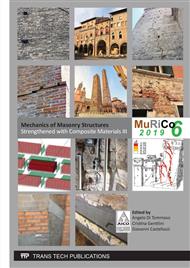p.613
p.621
p.627
p.634
p.642
p.650
p.659
p.665
p.673
Problems with Maintaining in Required Technical Condition and Revitalization of Medieval Defense Fortries
Abstract:
Often, in the centers of some towns you can find remains of defensive fortifications, which are not always cared for according to their uniqueness and historical values and sometimes are no longer recognizable. These objects in the eighteenth century have become unnecessary due to changes in the tactics of waging war and a significant modernization of armaments and war craft. Their appearance still gives the impression of massiveness, but in reality it often goes beyond the truth. In the 19th and 20th centuries these buildings were neglected and brought to a ruinous state, transformed into residential or public buildings, and even quite often dismantled. A large part of them no longer exists, hence the overriding goal now is to save their remains and revitalize. In the article, on the example of several such fortifications, their actual state and described activities that are undertaken in order to restore their technical and utilitarian efficiency will be approximated. As part of the article, a static and endurance analysis of the remains of a medieval defense wall of the length of about 70 m, located in one of the cities of south-western Poland will be carried out. Problems related to the implementation and effectiveness of ongoing repairs, reinforcements and structural maintenance will also be discussed, which coped well in times of its magnificence, in exceptional situations, i.e. burden of warfare, but currently they cannot resist climatic and environmental loads.
Info:
Periodical:
Pages:
665-672
Citation:
Online since:
August 2019
Authors:
Keywords:
Price:
Сopyright:
© 2019 Trans Tech Publications Ltd. All Rights Reserved
Share:
Citation:


